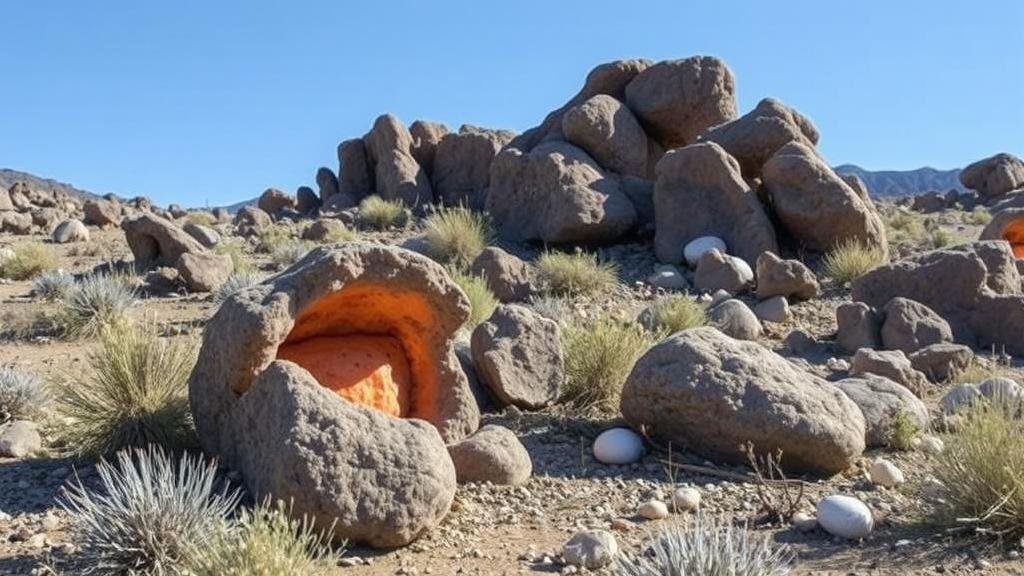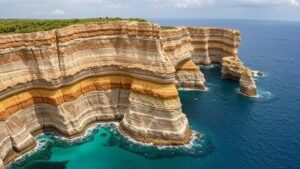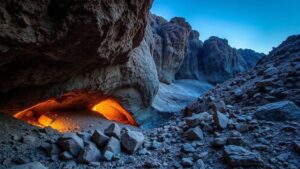Exploring rhyolite outcrops in the Kneeling Nun formation for collectible lithophysae and thunder eggs.
Exploring Rhyolite Outcrops in the Kneeling Nun Formation for Collectible Lithophysae and Thunder Eggs
The Kneeling Nun formation, located in the state of Arizona, is a notable geological area recognized for its striking rhyolite outcrops and distinctive mineral formations. Among the treasures waiting for rockhounds and mineral collectors are lithophysae and thunder eggs. This article will explore these fascinating geological specimens, detailing their formation, significance, and tips for successful collection.
Understanding Rhyolite and the Kneeling Nun Formation
Rhyolite is a fine-grained volcanic rock characterized by its high silica content, typically exceeding 70%. It often forms through explosive volcanic activity, which results in the formation of pumice and other volcanic glass materials. The Kneeling Nun formation itself is primarily composed of this type of volcanic rock, giving it distinct physical characteristics, such as a light color, ranging from grey to pink.
Geologically speaking, the Kneeling Nun formation is a segment of a larger volcanic field and showcases a diverse array of geological features, including stratification, ash layers, and flow patterns. Collectors flock to this area not only for its stunning scenery but also for the unique specimens that can be found amidst these rhyolitic outcrops.
What Are Lithophysae and Thunder Eggs?
Lithophysae, often referred to as stone bubbles, are hollow, spherical to oval cavities found within volcanic rock formations. e formations are usually lined with quartz crystals, agate, or other mineral deposits, creating stunning displays that are highly sought after by collectors.
Thunder eggs are another unique geological formation, resembling a rounded, nodular mass within a volcanic matrix. Typically composed of a core of chalcedony, with a banded layer of agate or opal surrounding it, thunder eggs are prized for their intricate internal patterns and themes. They form when volcanic processes encapsulate bubbles or gas pockets that later fill with mineral-rich solutions.
Collecting at the Kneeling Nun Formation
For rockhounds and mineral collectors, careful planning and preparation are crucial for a successful field trip. Here are actionable tips to maximize your experience:
- Research and Timing: Plan your visit during the cooler months (Fall to Spring), as Arizonas summer heat can be extreme. Early morning or late afternoon offers the best light for spotting potential treasures.
- Tools and Equipment: Bring necessary tools such as a rock hammer, chisel, safety goggles, and sturdy gloves. A good pair of hiking boots is essential given the rugged terrain.
- Identify Locations: Focus your search on areas with visible rhyolite outcrops, particularly around weathered edges and cliffs where lithophysae and thunder eggs might be exposed.
- Respect Regulations: Always check for local regulations regarding collecting practices. Certain areas may have restrictions to protect unique geological features.
Safety Considerations
Safety should always be a priority when exploring remote geological sites like the Kneeling Nun formation. Here are a few safety considerations:
- Stay Hydrated: Carry plenty of water to avoid dehydration, especially in high temperatures.
- Take a Buddy: Partner with another collector for safety; there’s safety in numbers.
- Know the Terrain: Be aware of your surroundings, and avoid risky climbs or unstable ground.
Real-World Applications for Collectors
Understanding the geology of rhyolite and its associated formations can enhance a collectors appreciation for their findings. Lithophysae and thunder eggs not only serve as decoration but can also be used in educational contexts, fostering interest in geology and Earth sciences. For those venturing beyond basic collection, the specimens can also be utilized for lapidary work, where they are polished and cut for jewelry or art displays.
Conclusion
The Kneeling Nun formation presents a unique opportunity for collectors interested in rhyolitic outcrops and their associated mineral formations. By employing adequate preparation, respecting safety measures, and following proper collecting practices, rockhounds can uncover stunning lithophysae and thunder eggs. The rewards of this adventure extend beyond tangible specimens; they include a deeper appreciation for the geological processes that shape our world.



